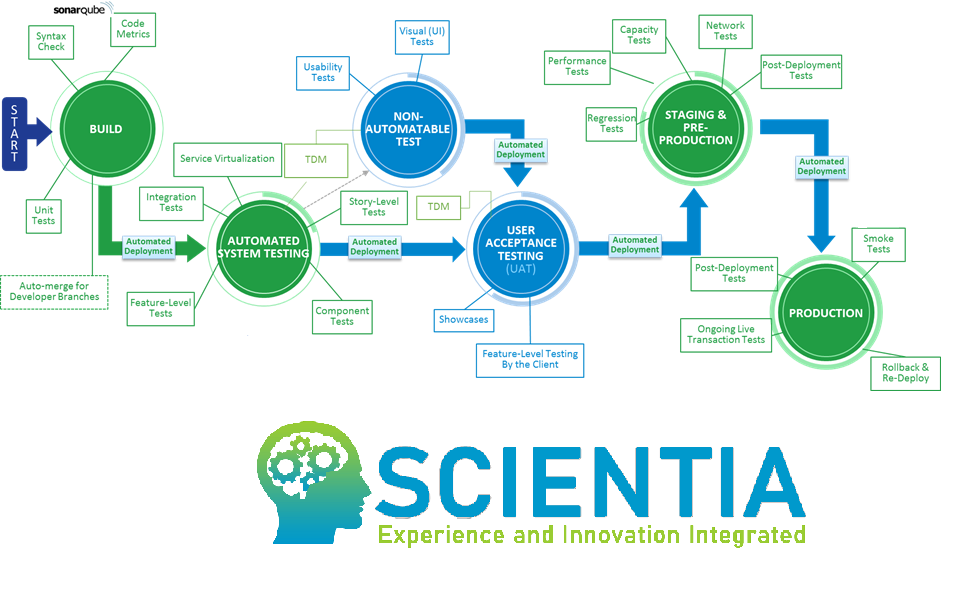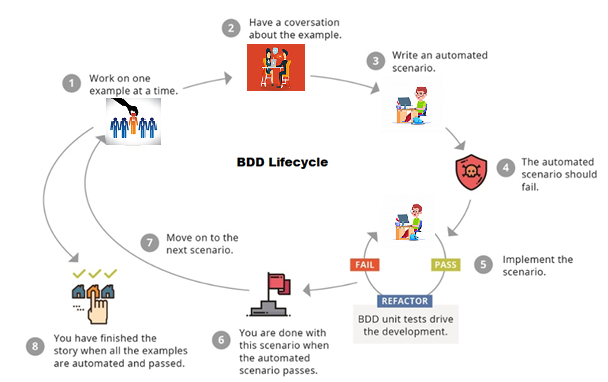
Dan North came with BDD in 2003 as an enhancement of TDD. BDD focus on the whole software life cycle, not only to units. It can be seen as a framework and it fits perfectly in agile project environments since BDD based on lean and agile methods.
With the use of gherkin language syntax, BDD provides the possibility to break down complex requirements and formulate them in a way that all involved roles have an equal understanding of the requirements. The BDD life cycle is similar to the TDD life cycle but on a larger scale.

How BDD with DevOps, Addresses Challenges:
Deployment Frequency: With feature-driven accelerated development and integrated tool reference architecture aligned to DevOps pipeline, enterprises can increase deployment frequency by up to 40%.
Code Quality: Compared to traditional development methodologies, BDD, with TDD and automation-driven testing, builds in better code quality. Further, instrumenting source code and then integrating it with a number of tools provides for both static analysis and dynamic code coverage. These ensure structural defects are addressed and also measure of different aspects; run time coverage, branches, and methods are already taken care of before the code comes in for testing.
Agile Dashboard and Release Reliability: The live reporting feature in BDD helps track user stories and sprint levels. When a DevOps-specific dashboard is integrated with BDD, it enables continuous feedback loops to reduce incidents, rework and increase the overall release stability.
Continuous Testing for Quality @ Speed: According to Forrester Research, embedding Continuous Testing in DevOps is the way to drive quality at speed. Along with CI/CD, hypothesis-driven development has been called out as one of the key opportunities here.

